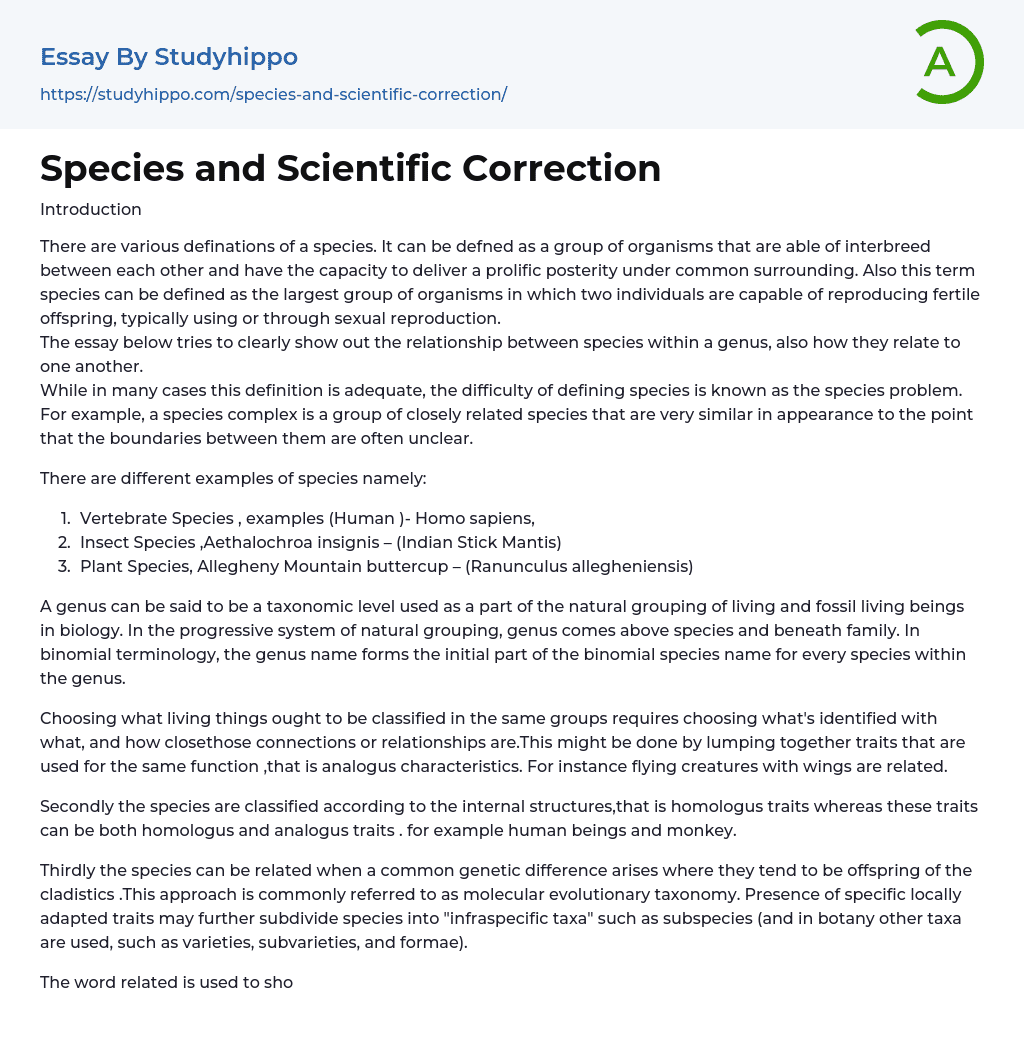Introduction
Different interpretations exist regarding the definition of a species.
The term "species" refers to a group of organisms that can interbreed and produce fertile offspring in a common environment. It is also the largest group of organisms where two individuals are able to reproduce fertile offspring, usually through sexual reproduction. This essay explores the connection between species within a genus and their relationships with each other, while addressing the challenge known as the species problem.
To illustrate, a species complex is a cluster of closely related species that bear great resemblance in appearance to the extent that their boundaries are often indistinct. Various examples of species encompass:
- Vertebrate Species, examples (Human)- Homo sapiens,
- Insect Species, Aethalochroa insignis – (Indian Stick Mantis)
- Plant Species, Allegheny Mountain buttercup – (Ranunculus allegheniensis)
A genus is a taxonomic level employed in the natural grouping of living and fossil beings in biology. Within the progressive system of natural grouping, genus ranks higher than species but lower than family. In binomial terminology, the name of the genus constitutes the initial part of each species' binomial name within that genus. The classification process for living things into groups necessitates determining their relationships and proximity thereof. This can be achieved by clustering traits together that serve similar functions which are known as analogous characteristics. For example, creatures possessing wings share a relation.
The classification of species is based on internal structures, specifically homologous traits, which can be both homologous and analogous. An example of this is the similarity between human beings and monkeys. Additionally, species can be related through common genetic differences, indicating they are offspring of the cladistics. This approach is
known as molecular evolutionary taxonomy. Specific locally adapted traits may further divide species into "infraspecific taxa" such as subspecies. In botany, other taxa such as varieties, subvarieties, and formae are used. The term "related" indicates the presence of similar features or traits among members of a group and assists taxonomists in classifying organisms into different classes.
The taxonomy of a genus requires taxonomists to determine the similarity among its members based on certain features. Organisms with similar features are classified under the same genus.
Conclusion
Species that share similar features are considered related and classified under the same genus. This relationship can be determined through various approaches, including analogous traits, homologous traits, and molecular evolutionary taxonomy.
- Agriculture essays
- Albert einstein essays
- Animals essays
- Archaeology essays
- Bear essays
- Biology essays
- Birds essays
- Butterfly essays
- Cat essays
- Charles Darwin essays
- Chemistry essays
- Dinosaur essays
- Discovery essays
- Dolphin essays
- Elephant essays
- Eli Whitney essays
- Environmental Science essays
- Evolution essays
- Fish essays
- Genetics essays
- Horse essays
- Human Evolution essays
- Isaac Newton essays
- Journal essays
- Linguistics essays
- Lion essays
- Logic essays
- Mars essays
- Methodology essays
- Mineralogy essays
- Monkey essays
- Moon essays
- Mythology essays
- Noam Chomsky essays
- Physics essays
- Plate Tectonics essays
- Progress essays
- Reaction Rate essays
- Roman Numerals essays
- Scientific essays
- Scientific Method essays
- Scientist essays
- Seismology essays
- Space Exploration essays
- Stars essays
- Sun essays
- Thomas Edison essays
- Tiger essays
- Time Travel essays
- Universe essays




